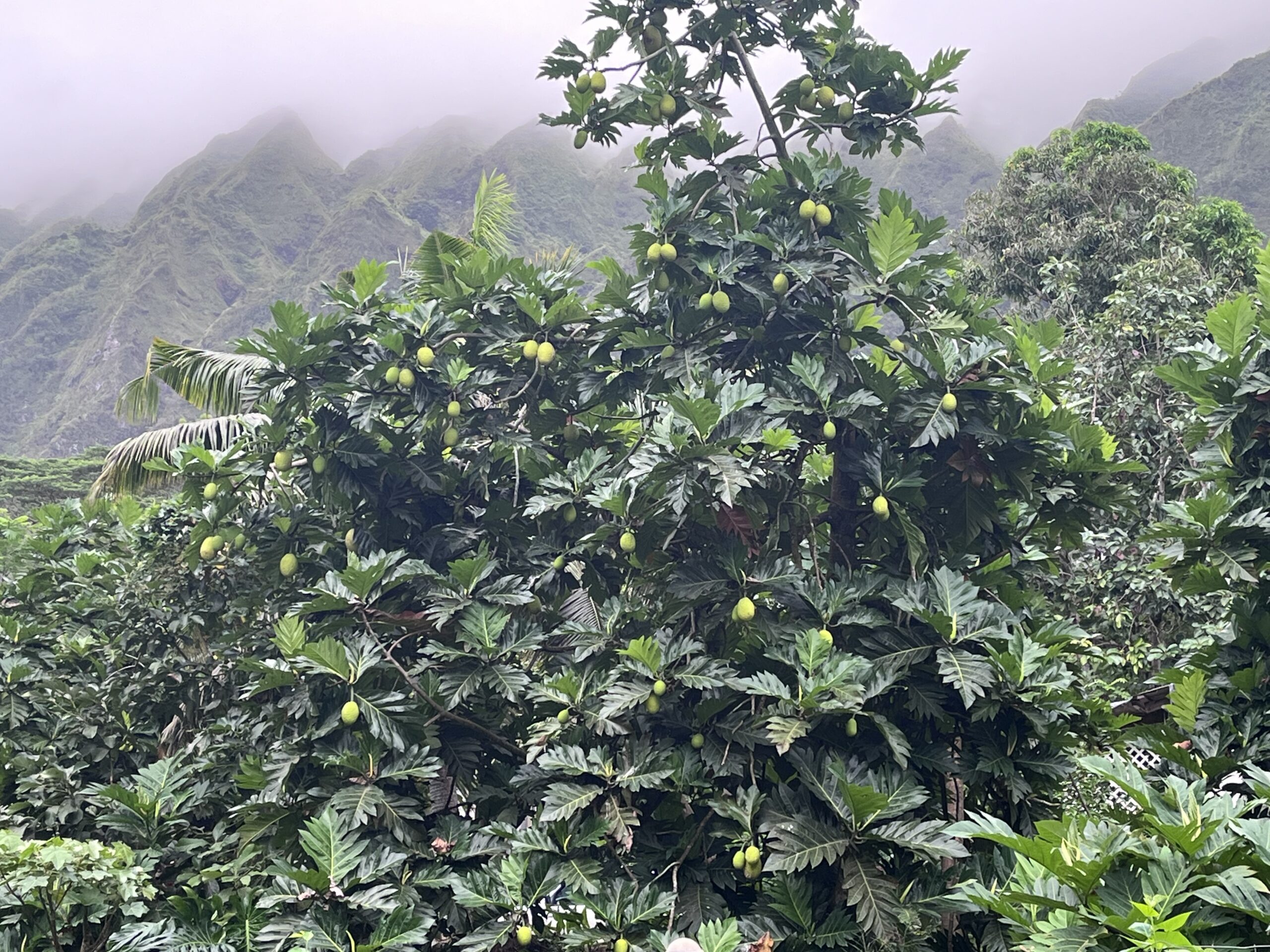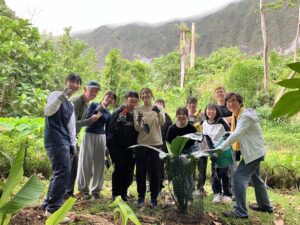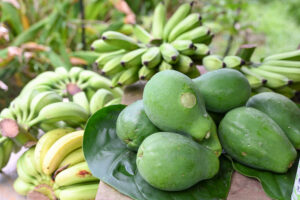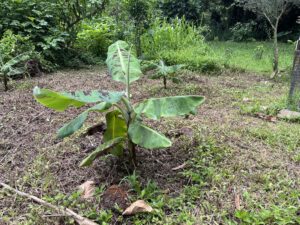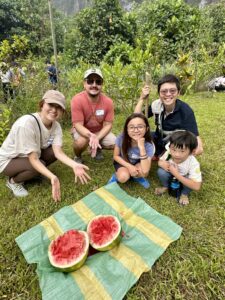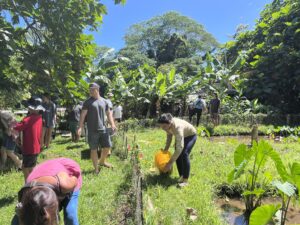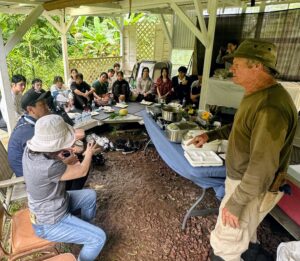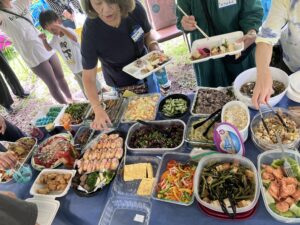Thanksgiving is just around the corner. The year-end is coming soon. As in other areas of the world this year, Hawaii has also weathered extreme climate fads causing heavy rain and drought. Nevertheless, our ulu trees have sustained the farm with powerful energy and reproduced a lot of fruit this year, again.
Ulu, also known as breadfruit in English, grows on tall trees and has long been loved by people as a highly nutritious staple in the Pacific islands, such as the Hawaii islands, South Asia, the Caribbean, and other regions near the equator.
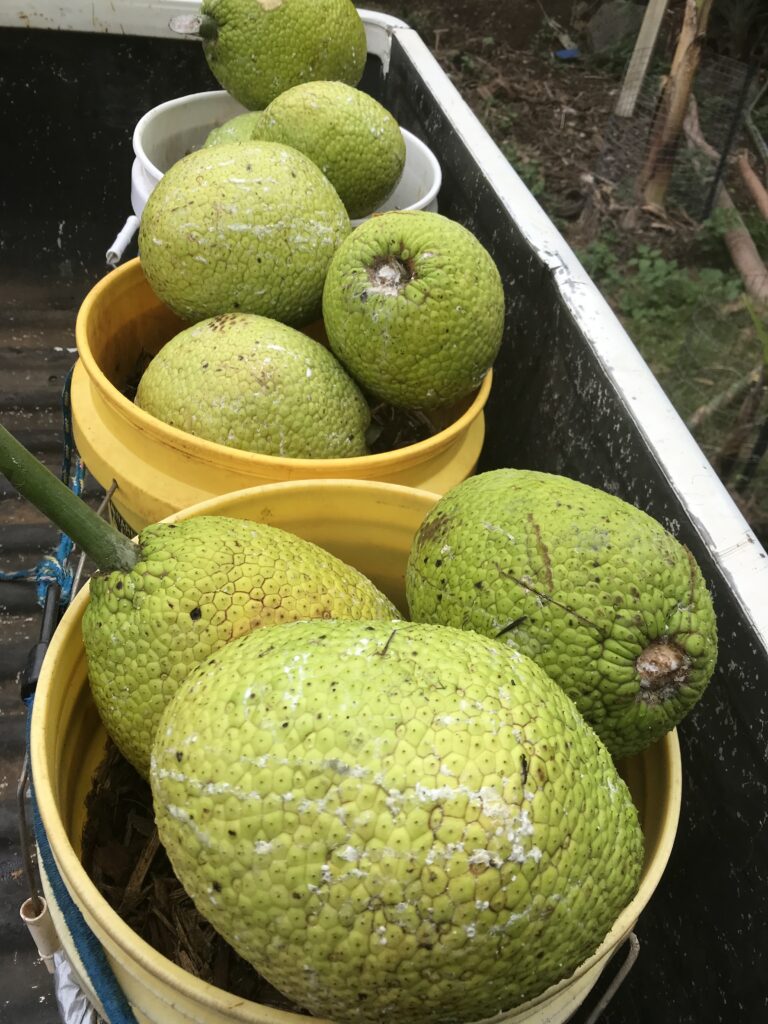

While it tastes starchy like potatoes and good energy source, it contains more fiber, carbohydrates, and protein than potatoes or rice. Some people call it “a superfood of tropical islands” because it is a great source of nutrients, like the ones of fruits and vegetables, which include Vitamin A & B, magnesium, potassium, calcium, and iron. It also has lutein and beta-carotene that can prevent lifestyle-related diseases. (Reference: Nutritional Benefits of ‘Ulu provided by the Hawaii Ulu Co-op)
Ulu trees are evergreen and grow well in the warm subtropical climate without fertilizers and pesticides. Because of its natural ability to produce a crop, which lasts for decades, the ulu farming has been highlighted in Hawaii over the past few years as the champion of “ancient sustainable agriculture.”
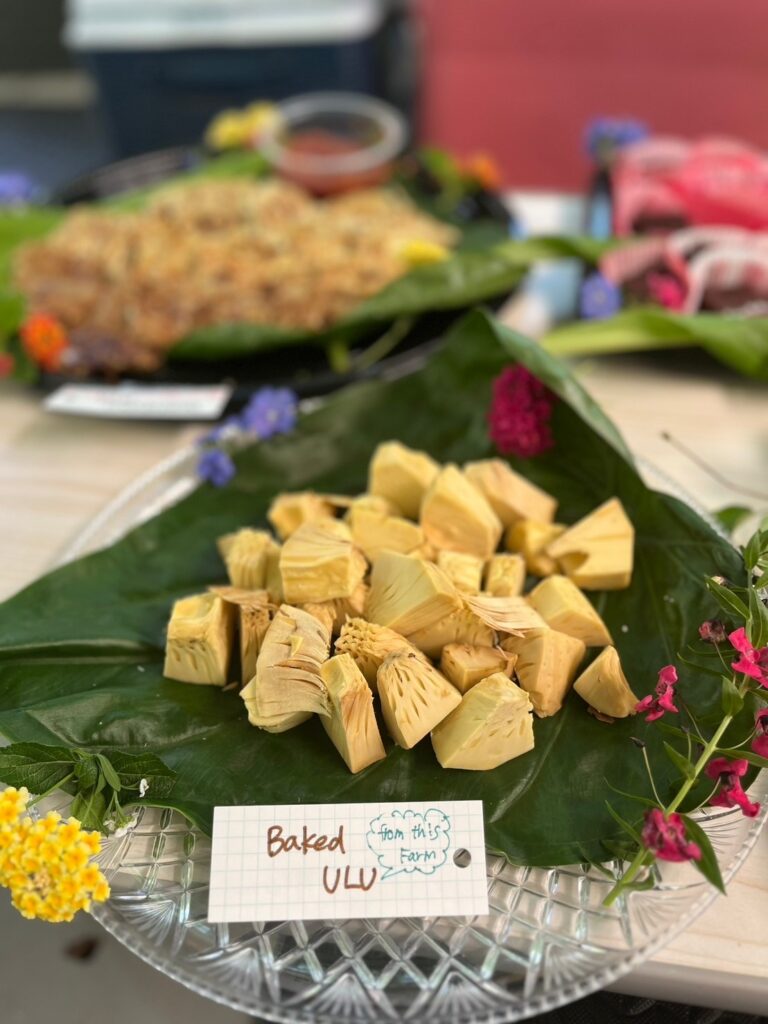
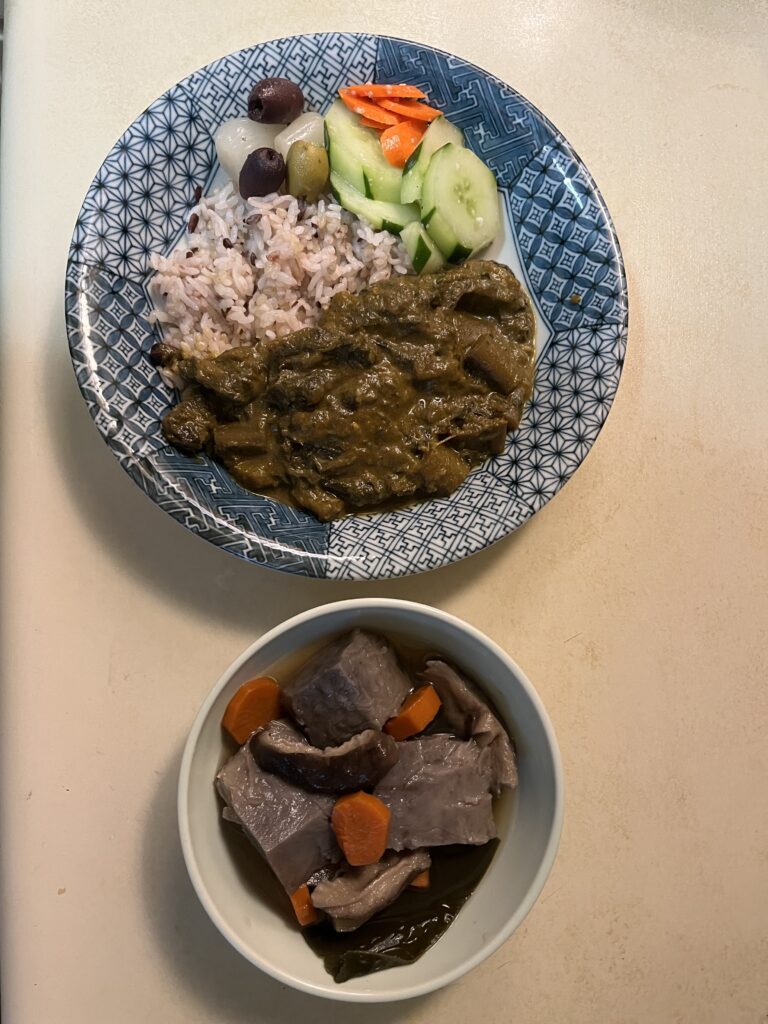
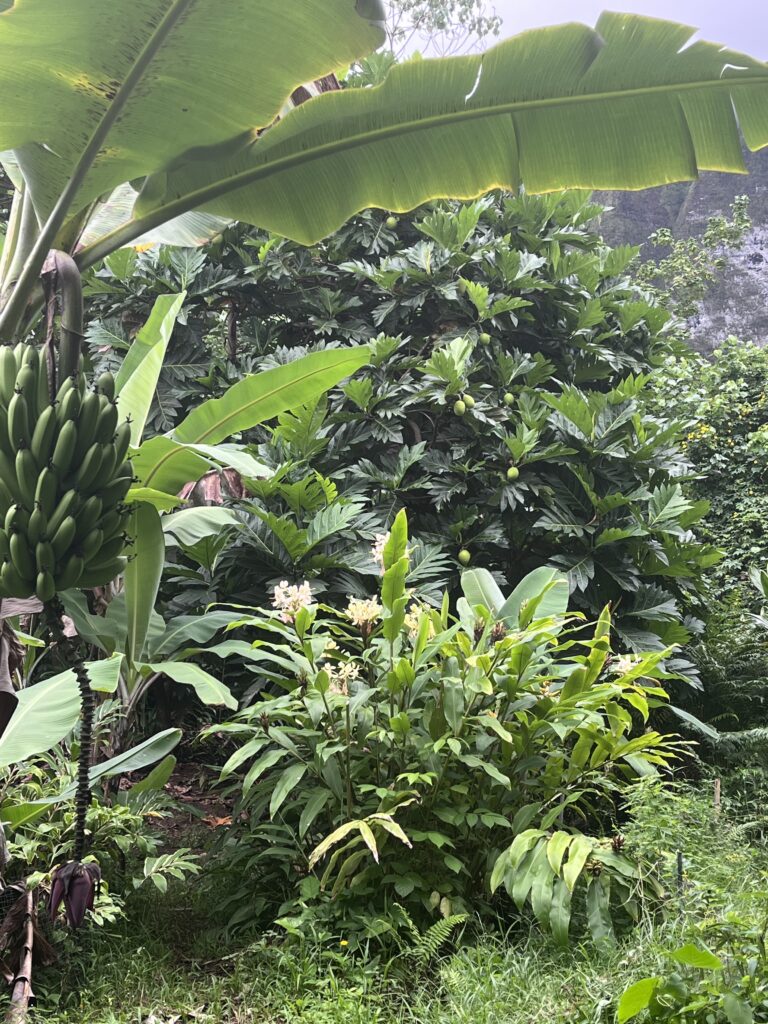
The fruit is produced in abundance from summer through winter on our farm. Depending on the climate, the type of ulu, the age and condition of the trees, and other factors, the yields per tree are extremely variable. The average production of ulu in the Pacific Islands is 150 to 200 fruits from each tree. (Source: Species Profiles for Pacific Island Agroforestry/ www.traditionaltree.org )
Local people love it as a versatile ingredient and enjoy it at each stage of its maturity and ripeness. When the surface is still green, the fruit is immature and firm. But if it starts dripping the white latex on the surface, it can be sliced thinly into chips, salads, or pickles to enjoy its crunchy texture.
When the outer color turns yellow-green with brown patterns, that is when ulu is at its best for creating your recipes. It can be boiled, baked, stewed, or fried like potatoes, and is used in a variety of dishes. When an ulu turns brownish and is fully ripe, it becomes creamy and very sweet, so you can easily peel and put it into the food processor to make non-sugar pancake dough. At the latest Fall Equinox event on the farm, our staff member Matt made ice cream with a ripe ulu and coconut creme, which was a big hit among health-conscious girls.
Speaking of the upcoming Thanksgiving, we also have a bunch of Williams bananas ready to harvest. Let’s see; maybe I can mix the fresh banana and ulu cream to bake a “Second Nature Thanksgiving Special Pie”!

